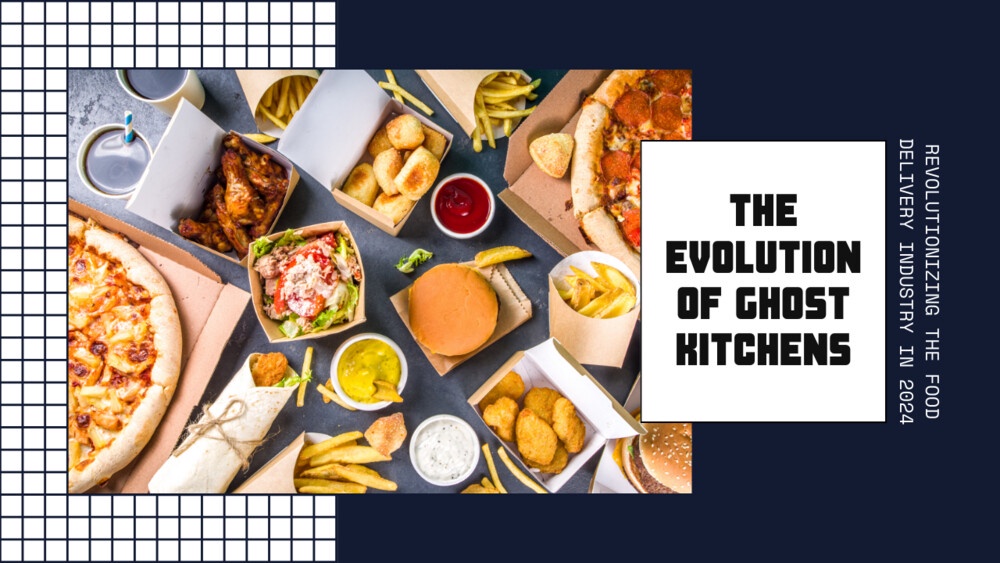Introduction
The food delivery industry has witnessed a seismic shift in recent years, driven by the increasing demand for convenience and the rapid adoption of online food ordering platforms. At the forefront of this revolution are ghost kitchens, also known as dark kitchens or virtual kitchens, which have emerged as a game-changing concept in the world of food delivery. As we enter 2024, these innovative culinary spaces are poised to reshape the industry, offering a more efficient, cost-effective, and customer-centric approach to satisfying our cravings.
What are Ghost Kitchens?
Ghost kitchens are commercial kitchen facilities designed solely for the purpose of preparing food for delivery or takeout orders. Unlike traditional restaurants, they do not have a dine-in option or a physical storefront for customers. Instead, these kitchens operate behind the scenes, utilizing advanced food delivery software and online food ordering platforms to streamline the order and fulfillment process.
The Rise of Ghost Kitchens
The concept of ghost kitchens gained significant traction during the COVID-19 pandemic, when dine-in restrictions and social distancing measures forced restaurants to adapt quickly to the changing landscape. With a focus on delivery and takeout orders, ghost kitchens provided a cost-effective solution for restaurants to maintain operations and reach customers directly in their homes.
As the pandemic subsided, the popularity of ghost kitchens continued to soar, driven by the growing consumer demand for convenience, variety, and the desire for a seamless dining experience without leaving the comfort of their homes or offices.
The Advantages of Ghost Kitchens
- Cost Efficiency
One of the primary advantages of ghost kitchens is their cost-effectiveness. By eliminating the need for a physical dining space, ghost kitchens can significantly reduce overhead costs, such as rent, staffing, and overhead expenses associated with maintaining a traditional restaurant. This allows restaurant operators to focus their resources on optimizing their kitchen operations and delivering high-quality food. - Increased Flexibility
Ghost kitchens offer unparalleled flexibility to restaurant operators. With the ability to operate multiple virtual brands from a single kitchen, entrepreneurs can experiment with different cuisines, menu offerings, and pricing strategies without the significant investment required for brick-and-mortar establishments. This flexibility enables them to respond quickly to changing consumer preferences and market trends. - Optimized Operations
Ghost kitchens are designed with efficiency in mind. By leveraging advanced online food ordering platforms and food delivery software, orders can be processed and fulfilled with minimal friction. Additionally, the streamlined operations within ghost kitchens allow for faster turnaround times, ensuring that customers receive their orders promptly and at the desired temperature.
The Future of Ghost Kitchens in 2024
As we look ahead to 2024, the evolution of ghost kitchens is set to accelerate, driven by technological advancements and changing consumer behaviors.
- Integration with Advanced Technologies
Ghost kitchens are increasingly embracing cutting-edge technologies to enhance their operations and improve the customer experience. Artificial intelligence (AI) and machine learning algorithms are being employed to optimize kitchen workflows, predict demand patterns, and personalize menu offerings based on customer preferences.
Additionally, the integration of robotics and automation systems is streamlining food preparation processes, reducing labor costs, and minimizing the risk of human error.
- Expansion of Virtual Brands
The success of ghost kitchens has paved the way for the proliferation of virtual brands – restaurant concepts that exist solely in the digital realm. These virtual brands leverage the infrastructure of ghost kitchens to offer a diverse range of culinary experiences without the need for physical storefronts.
In 2024, we can expect to see an explosion of virtual brands catering to niche markets, dietary preferences, and unique culinary experiences, providing consumers with an unprecedented level of choice and convenience.
- Delivery Optimization
As the demand for food delivery continues to grow, ghost kitchens are poised to play a pivotal role in optimizing the delivery process. Advanced routing algorithms and real-time tracking systems will ensure that orders are delivered efficiently and within the promised timeframes.
Additionally, the integration of eco-friendly delivery methods, such as electric vehicles and advanced packaging solutions, will contribute to a more sustainable food delivery ecosystem.
- Data-Driven Insights
Ghost kitchens generate a wealth of data related to customer preferences, order patterns, and operational metrics. By leveraging advanced data analytics tools, ghost kitchen operators can gain valuable insights into consumer behavior, enabling them to make informed decisions regarding menu offerings, pricing strategies, and operational efficiencies.
This data-driven approach will not only enhance the customer experience but also drive profitability and long-term success for ghost kitchen operators.
Conclusion
The evolution of ghost kitchens in 2024 represents a paradigm shift in the way we perceive and experience food delivery. By combining cutting-edge technologies, operational efficiencies, and a customer-centric approach, ghost kitchens are revolutionizing the industry, offering a seamless and convenient dining experience tailored to the modern consumer's lifestyle.
As we embrace this culinary revolution, it is clear that ghost kitchens will play a pivotal role in shaping the future of food delivery, providing a platform for innovation, entrepreneurship, and culinary excellence. Whether you're a restaurant operator, a food enthusiast, or a consumer seeking convenience and variety, the ghost kitchen phenomenon is poised to redefine the way we dine in 2024 and beyond.


No comments yet